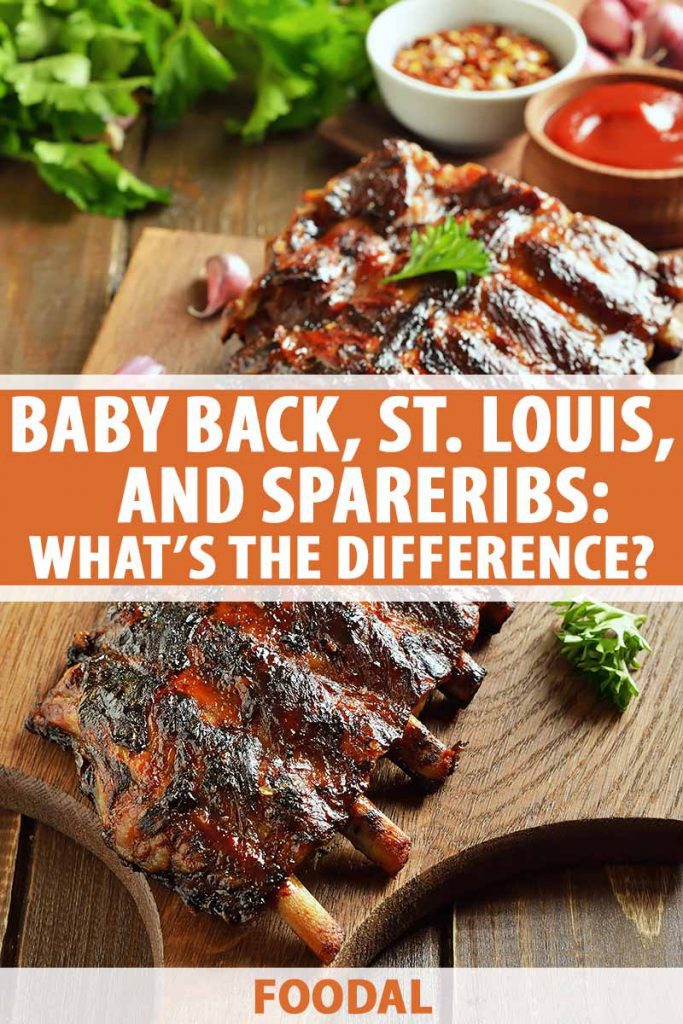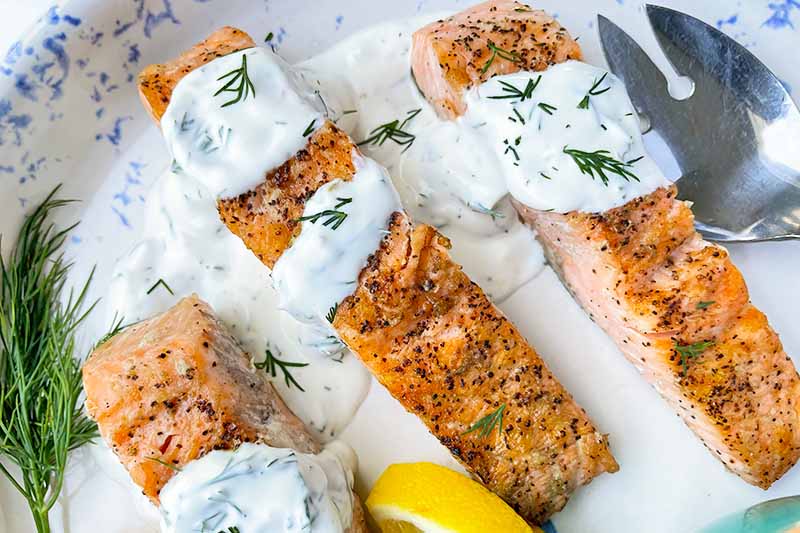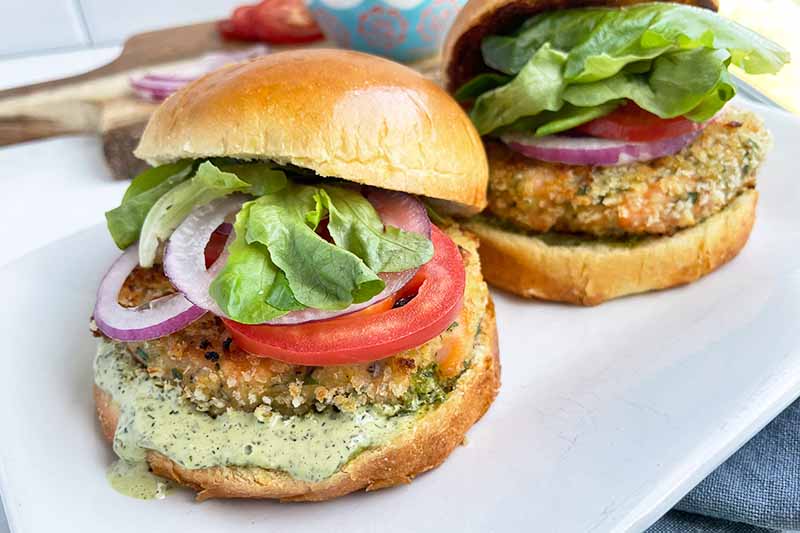Whether you’re a celebrated cookout hero or a grilling greenhorn, the wide world of ribs can be a confusing place.
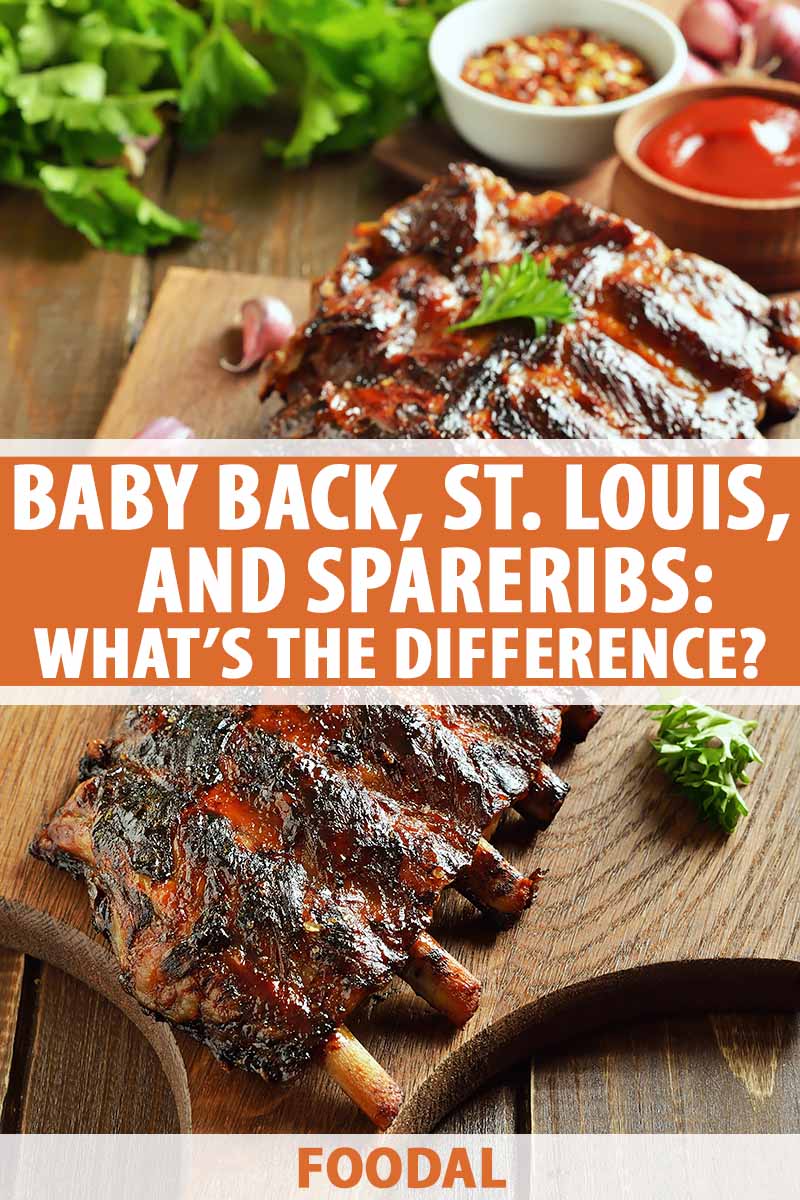
Tackling a rack is daunting if you don’t have a clue about what differentiates one cut from the next. Granted, pork ribs can be fairly interchangeable, but it’s still nice to know what you’re working with.
We don’t doubt that you can already handle those tongs like a pro. You might be the king of charbroiled burgers, but you have no idea why St. Louis-style spareribs are easier to brown. You could be the sultan of shrimp kebabs, but clueless as to why baby backs have nothing to do with that runt-of-the-litter character from Charlotte’s Web.
Not only will this guide become your go-to for selecting the most superior cut to fit your specific needs, but we’ll throw some cooking tips and tricks your way as well.
So listen up, both rookies and masters of meat – we’re going back to the basics. Just ahead, we’ll cover the following:
What’s the Difference Between Baby Back, St. Louis, and Spareribs?
Differences Between the Cuts
Let’s start with spareribs. These are found on the side or underbelly of the pig. That succulent region is also known for producing cured products like pancetta and bacon, so you know we’re in prime flavor town.

St. Louis-style falls into the same class as the above as they’re simply spareribs that have been trimmed further. For this cut, the hard breastbone and chewy cartilage are removed, making them a little easier to work with.
Baby backs are a narrower slab taken from along the loin – the muscle that runs along the pig’s back on either side of the spine. You’ll occasionally find them marked “loin back ribs” at the grocery store. They have less fat, but more meat than spareribs.
And just for reference, country-style ribs (cut from the loin section like back ribs) are famous for being the meatiest of the bunch. They’re sometimes sold boneless, and in general, have much less bone than the others.
Size and Serving
Spareribs have the least amount of meat of the three, and they aren’t exactly uniform in shape. But don’t let these characteristics discourage you. They’re incredibly flavorful and about one pound per person does the trick, since the overall cut is bigger than the others.
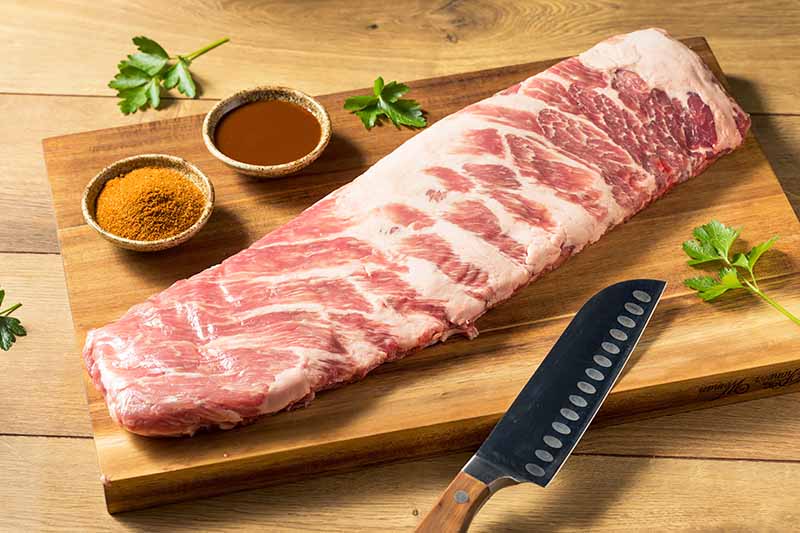
Not that shape necessarily matters when it comes to indulging in pork, but the St. Louis style does boast a spectacularly flat, rectangular figure. This gives these the advantage of even browning, since they rest in a level way on the cooking surface.
Baby backs are often dubbed “riblets,” which makes them undeniably adorable. Cuteness aside, they’re shorter than spareribs, and are loaded with lean meat on top of the bones as well as in between.
A whole rack of baby backs has about 10 to 13 ribs that are about three to six inches in length, and weighs between one and a half to two pounds. This can feed about two people.
Cooking Methods
Ribs are most commonly grilled, baked, or braised. According to “The Joy of Cooking” by Irma Rombauer, “the two most important factors in cooking ribs well are time – plenty of it – and temperature – very low.”
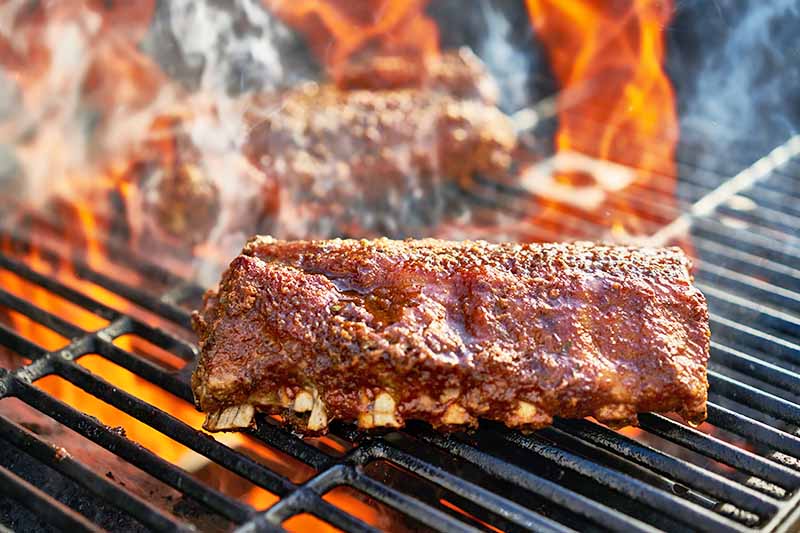
That being said, if you’ve ever even stepped near a southern smokehouse, you’re probably familiar with the phrase, “low and slow.”
Those words aren’t just repeated often because they’re fun to say and they rhyme. They’re a way of life when it comes to ‘cue culture. No matter the cooking method you’re using, time and temperature are crucial when preparing them.
The heftier size of St. Louis-style means they take longer to cook. Keep in mind that baby backs may take one and a half to two hours, while St. Louis ribs could be cooking away for two and a half to three hours.
About 300°F is the money spot for baking, though some recipes call for a temperature closer to 325°F. For those who shy away from more hands-on techniques, using your oven is the way to go if you’d prefer to avoid the grill. Just remember that all ovens aren’t created equal, so understanding your oven is a key element in this process.
Cover the rack with foil and either baste as you go, or brush with sauce at the end. They’ll also benefit from a little time under the broiler just before they hit the finish line. That high heat is a foolproof option to caramelize the outsides, just don’t walk away to grab a cold one or you run the risk of burning your dinner.
The broiler has been blamed for more than one incident involving food that was burnt to a crisp.
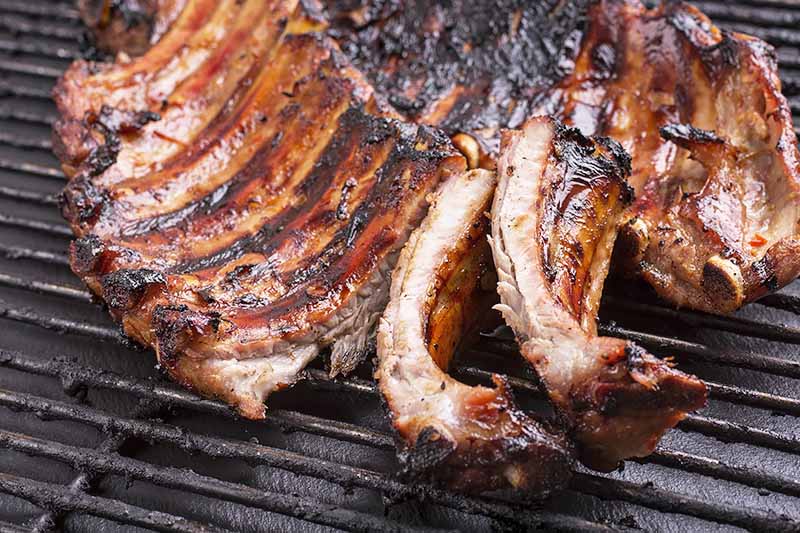
On the grill, it’s as simple as this: ribs do best when they’re cooked over indirect heat.
Whether you’re going with gas or charcoal, learning how to up the smoke flavor in your grilling game never hurt anybody.
As far as charcoal grilling goes, pushing a pile of hot coals to the side means the roaring flame isn’t overcooking the exterior of the meat. But if you’re working with a gas grill, flip on all the burners until it’s hot, switch one off, and then place the meat over that section so they’ll benefit from the indirect heat.
To speed up the cooking time and tenderize the meat, you can even parboil them before throwing them over the grate.
Here are some tips to level up your overall grilling game.
If your plan is braising, you can go down the path of marinating, then oven-braising at a high temperature. Or, give them a killer crust in a heavy-bottomed pan like a Dutch oven, and braise in liquid until tender.
For a visual on what it means to achieve a tender piece, imagine being able to easily loosen or wiggle the bone away from the meat. That’s what you’re going for.
Seasoning Suggestions
Now that you have the necessary know-how to achieve truly delectable fall-off-the-bone ribs, what about the seasonings?
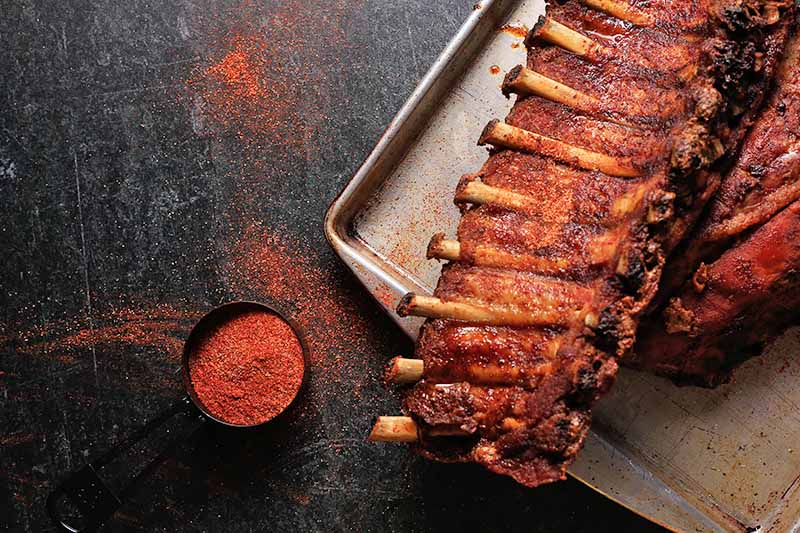
We love any type of meat that can soak up flavor like a champ, and ribs are renowned for their ability to do exactly that. Dry rubs are a popular choice, no matter the cut.
Adding a little sugar in your dry rub (or sauce) also promotes caramelization.
Next, let’s get saucy for a second.
There are infinite ways to wet a rib. Tangy Texas-based and creamy white ‘Bama sauce are at the top of my list, though this cider and spice version is also a delightful punch in the mouth.

A classic sticky-sweet blend is always a winner, but throw in some fiery chilies and citrus and you’re in for a definite party on your palate.
Many sauces contain some type of sweetener that will tend to burn over high, direct heat. That being said, if your goal is to create a golden crust on the meat’s exterior, don’t slather on the wet sauce until after you’ve achieved that sear and adjusted the temperature to indirect, medium-low heat.
Under lower and less direct heat conditions, wet sauces can be slathered on from the get-go.
Rack ‘Em Up
Before you dip out to prep for the meaty extravaganza I know you’re ready to throw, here are five easy steps to make sure you crush the main attraction.
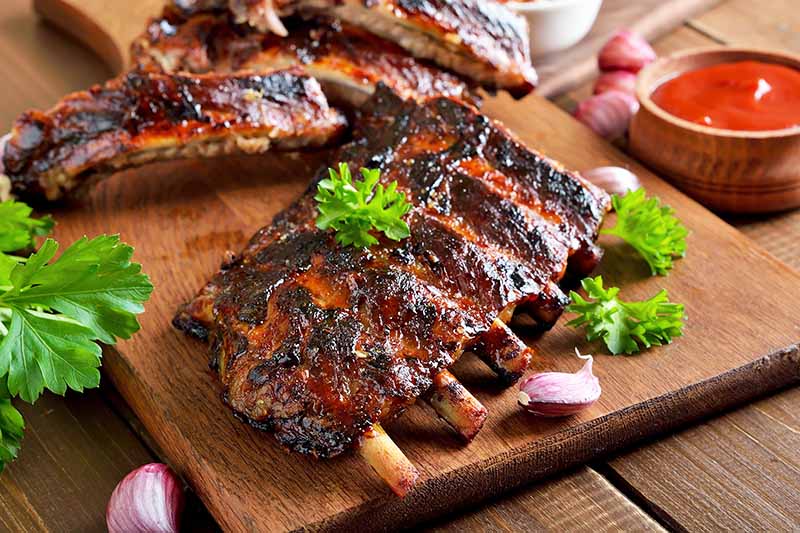
And if any of your guests come to call with the ever-lingering inquiry, “Are these ribs beef or pork?”, tell them it’s not a silly question.
Beef ribs are the fattier of the two, and the melt-in-your-mouth short ribs they’ve likely enjoyed over mashed potatoes or egg noodles are beef taken from an area between the chuck and the loin.
Generally speaking, however, and for the purpose of this guide, we prefer to mosey around the land of pork. What a great place to be.
Do you spread on the sauce with no regrets, or solely stick to dry rubs? Share your ‘cue coating techniques in the comments below!
You can’t be a well-rounded grill master without some other epic barbecue recipes besides ribs under your belt, and these smoky favorites always hit the spot:
- Crispy Grilled Jamaican Jerk Chicken Wings
- Coffee-Rubbed Barbecue Cheeseburgers
- Homemade Carne Asada
© Ask the Experts, LLC. ALL RIGHTS RESERVED. See our TOS for more details. Uncredited photos via Shutterstock. With additional writing and editing by Allison Sidhu.
About Fanny Slater
Fanny Slater is a home-taught food enthusiast based in Wilmington, North Carolina who won the “Rachael Ray Show” Great American Cookbook Competition in 2014, and published her cookbook “Orange, Lavender & Figs” in 2016. Fanny is a food and beverage writer, recipe developer, and social media influencer. She was a co-host on the Food Network series “Kitchen Sink,” was featured on Cooking Channel’s longtime popular series “The Best Thing I Ever Ate,” and continues to appear regularly on the “Rachael Ray Show.”

